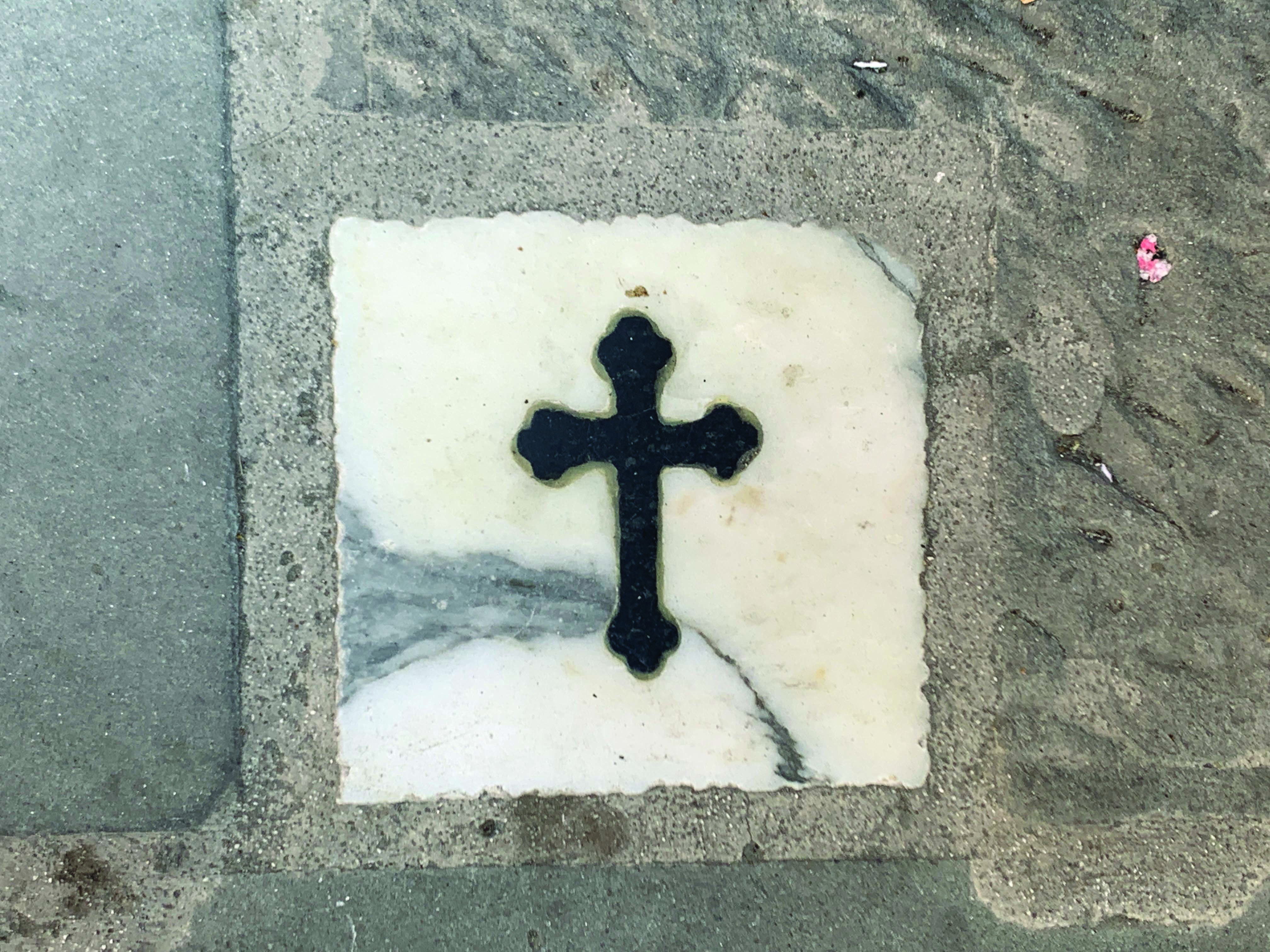6.1 Of crimes and Siena
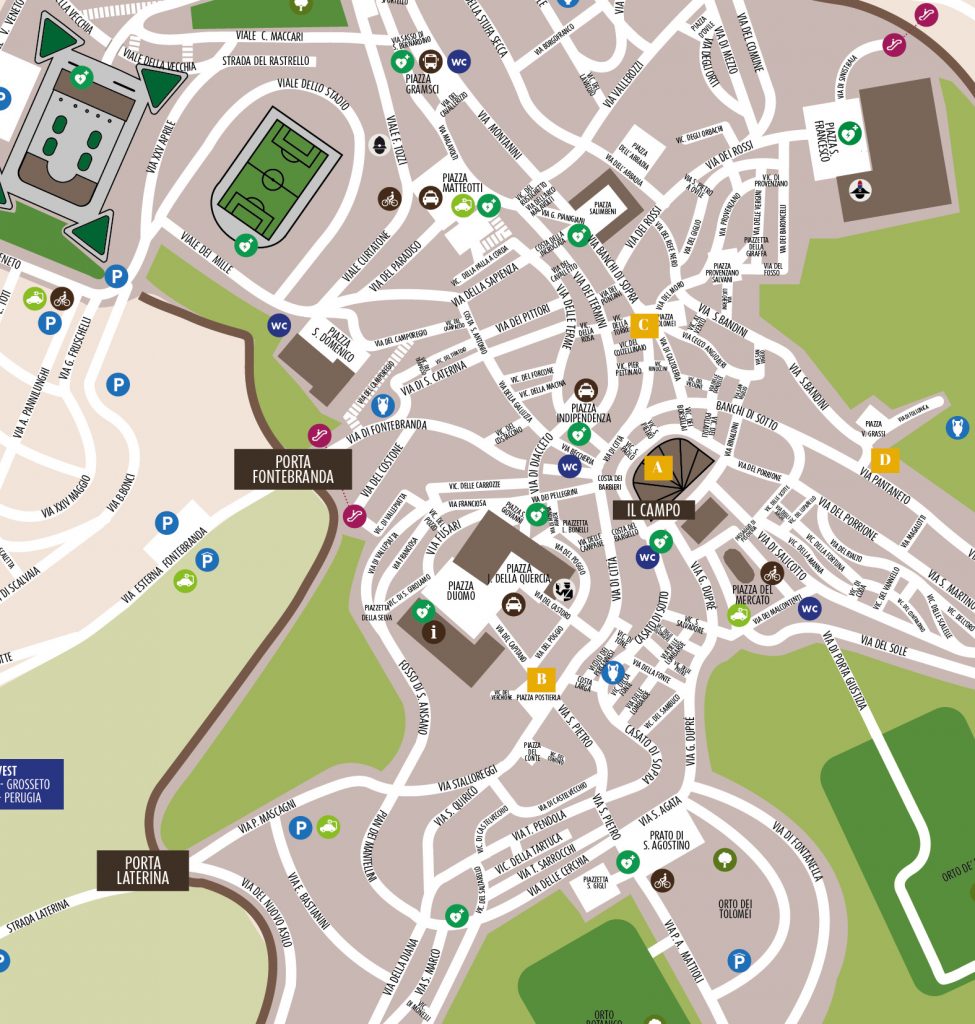
Piazza del Campo
For the first chapter of this story, I tried to come up with an unusual tale about our beautiful city of Siena, which is all too often considered to be lacking in stimuli; a narrative that would be both novel and compelling. So I thought of a tour connected to the historical assassins for whom the streets of this city served as the background to their crimes; the protagonists of the misdeeds in question being the noble families, il Barbicone, il ‘Magnifico’ Pandolfo Petrucci, and many others! The golden age of the proud Republic of Siena was the 13th century, more commonly known as the Dugento. It was the period of the victory of the Sienese Ghibellines against the Guelphs of Florence in the infamous Battle of Montaperti and of the affirmation of the Sienese school of painting, as can be witnessed in the ‘Crypt’ of the Duomo (dating back to the 1270s), an extraordinary testimony of art which played a unique and influential role in the first decades of the following century when Duccio di Buoninsegna, Simone Martini, and the Lorenzetti brothers dominated the artistic scene of the city.
In 1287, the Governo dei Nove (Government of the Nine) was established, a ‘fair’ government, made up of nine members of the ‘mezzana gente’ (the middle class), who held office every two months and spent their term segregated in the Palazzo del Comune (town hall) to avert corruption. It was the Governo dei Nove that commissioned some of the most famous building and artistic works in Siena, such as Piazza del Campo, the Palazzo Pubblico itself as well as the frescoes preserved there, such as the Buono e il Cattivo Governo e i suoi Effetti in Città e in Campagna, a cycle by Ambrogio Lorenzetti; la Maestà by Simone Martini in the Sala del Mappamondo, and the mariano (Madonna) cycle by Taddeo di Bartolo.
In this historical phase, the government had to be exclusively Guelph since the Ghibelline ‘party’ had already suffered several defeats (the latest of which, at the time, was the battle of Colle Val d’Elsa in 1269). As the government was comprised of the middle class only, nobles, lawyers, notaries, doctors—in short, anyone who possessed sufficient education or money to make laws that would benefit themselves at the expense of the community—were excluded from serving. This is one of the reasons why the supreme government could not hold out beyond 1355, the year that Charles IV of Luxembourg, holder of the title of Emperor of the Holy Roman Empire, was crowned King of Italy.
On his expedition across the boot, the monarch invaded various territories, from the north—one such being Milan—to the south, traversing Tuscany. The passage of the imperial court presented itself as an opportunity for the noble families of Siena, who had hither to been barred from holding office in government, to gain more prominent positions in the fabric of the city. However, not all the nobles agreed to remove the Governo dei Nove, but Charles easily convinced them, guaranteeing protection and privileges. Families such as the Tolomei, Salimbeni, Malavolti, Saracini, and Piccolomini agreed to remove the government and create a committee to reform the statutes and provide for the integration of the noble class. The Governo dei Dodici (Government of the Twelve), twelve being the number of members in the consistory, was then formed: six nobles and six merchants. The noble class, however, continued to be dissatisfied and demanded more positions.
From among the families driving this discontent, the Salimbeni took the lead since the house had played a key role in the revolt against the Governo dei Nove along with the fact that, with the Governo dei Nove out of the picture, the house had benefited greatly from the sizeable assets in the countryside around Siena that it counted among its possessions. In 1368, following a coup d’état, the Twelve were also deposed, and what followed was the introduction of a new form of government: that of the ‘Difensori’ (Defenders). This administration was formed at a time of great urban discontent, also owing to the Black Death, a terrible epidemic that had struck the city several times since 1348 and had led to the death of 60-70% of the European population. To complicate matters even more, there was also a prolonged drought, which had caused the prices of basic foodstuffs to soar.
Against such a backdrop, it is easy to imagine the hardship the populace was experiencing in the second half of the 14th century. But what would happen if the exploitation of wage earners were added to this already volatile mix? These are the historical premises that led to one of the first revolts of the working class, seven years before the more famous Florentine tumulto dei Ciompi (the Ciompi Revolt) took place as a result of the precarious situation of the disenfranchised wool workers.
The chronology of events was illustrated by Donato di Neri, who plunges us into the reality of the Piazza del Campo Riot of 1371, where the protagonist was a certain Francesco d’Agnolo, known as ‘il Barbicone’, delegate for the Compagnia dei lavoratori della lana (Company of Wool Workers)—precursor of the modern Contrada del Bruco—who, in a public demonstration, demanded an increase in the wages of the class he represented.
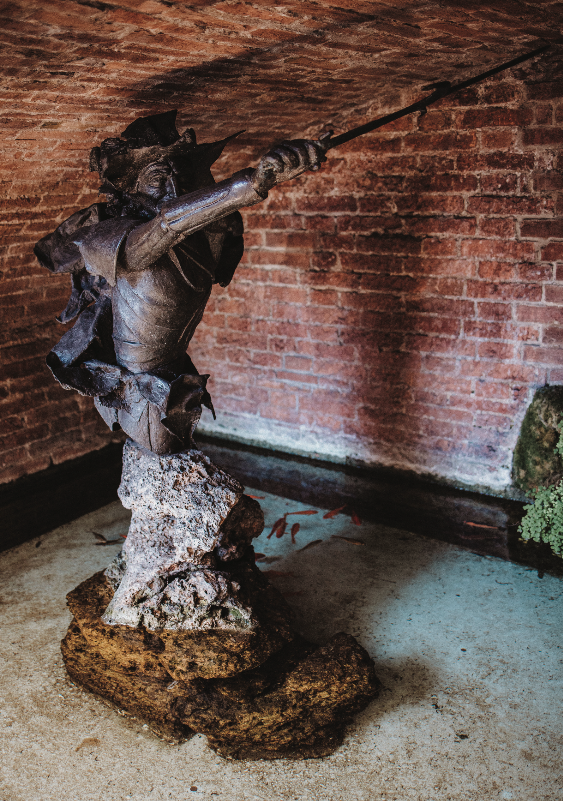
Despite il Barbicone’s good intentions, his speaking out was seen as an act of defiance and he was captured, imprisoned in the Palazzo Pubblico, and tortured. The torment and abuse suffered by il Barbicone led him to admit to a bogus conspiracy against the hierarchs of the Arte della lana (Wool Guild). The climate of the revolt was becoming increasingly heated, so much so that the Capitano del Popolo (Captain of the People), realising that an uprising could not be avoided with such tactics, demanded the release of il Barbicone, an act intended to demonstrate the good intentions of the ruling class.
Contrary to what had been predicted, however, the population realized that it had considerable political weight; provoked by years of subjugation and with the aid of several noble families and the Capitano del Popolo, it managed to penetrate the Palazzo Pubblico and oust the rulers. According to tradition, neither ladders nor doors were used to expel the government representatives; instead, they were thrown out of the windows into the chaos of the angry crowd below.
It was the aforementioned Salimbeni family that led an army of over 2000 men to put an end to the revolts, slaughtering the rebels—including the families of Ovile, the district housing the headquarters of the Compagnia dei lavoratori della lana—and their accomplices, among whom was the Capitano del Popolo himself, who was beheaded in the square a few days later.
Piazza Quattro Cantoni
One of the great fears in the political history of Siena between the 14th and 16th centuries was falling victim to Florentine control, which is why the City of the Palio sought alliances at even the most unthinkable courts, such as the Duchy of Milan.
In 1389, Gian Galeazzo Visconti agreed to protect Siena, but, alas, in 1399 this alliance turned into a submission that led the latter to drive out the powerful armies of the Biscione in 1403. Not even Milan could help Siena as it was just another power trying to get its claws into it. Instability at that time was king: Each family with a name sought supremacy over the others, and once again the Salimbeni family were at the forefront in proposing their hegemony of government.
In the 1480s, the Monte del Popolo came to power and imposed itself on the Monte dei Nove, driving it out of the city. Despite being exiled, the ‘Monte dei Nove’ succeeded in organising revolts, seeking alliances among the growing number of disgruntled citizens. In this climate of great confusion, the figure that undoubtedly stands out above all others is Pandolfo Petrucci, who, a few years later, would become the Magnifico (Magnificent). This appellation is certainly more than deserved, as he was able, in a Siena devastated by the continuous struggles between classes and families, to establish a ‘criptosignoria’ (hidden rulership) and maneuver among the other players on the European political scene at the end of the century, such as France under the reign of Charles VIII (and his successor Louis XII), who invaded Italy in 1494 with the intention of regaining the throne of Naples.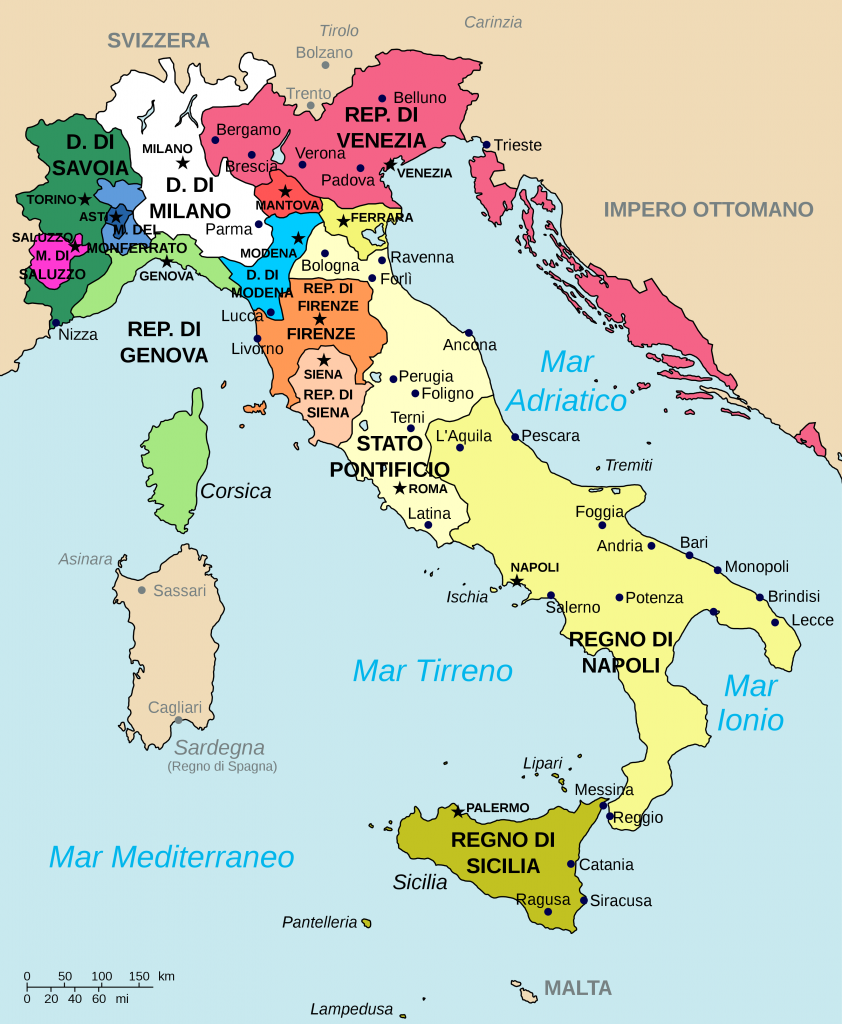
Among other events taking place on the peninsula during that period was the political rise of Ludovico il ‘Moro’, who succeeded in taking command of the Duchy of Milan from his naïve nephew Gian Galeazzo. In Tuscany, Florence’s power was concentrated in the hands of the Medici family, which, with Lorenzo il ‘Magnifico’ (the Magnificent), was responsible for creating one of the greatest artistic and literary conjunctions in the history of the ‘Lily City’.
Lorenzo de Medici’s hegemony over Florence lasted until 1492, the year of his death; at that moment, power passed into the hands of his son Piero, whose nickname would later become ‘lo sfortunato’ (the unlucky one) as he was unable to maintain control over Florence following the invasion of Charles VIII, allowing it to ‘fall’ into the hands of the Dominican friar Girolamo Savonarola.
The pope in office at that time was Alessandro VI Borgia, the name itself a guarantee. In fact, Cardinal Rodrigo, called to the papal throne, continued the unconventionality of his family: he had a son— a certain Cesare known as ‘Valentino’—of whom the pope made no secret; on the contrary, the pope placed him at the head of an army that ruled the surrounding territories and forcibly subjugated anyone who did not do so of their own accord.
While inventorying the great powers in charge at that moment in history, it is important not to leave out The Holy Roman Empire, led first by Maximilian I and then by Frederick III of Habsburg.
From the world picture outlined above, it is clear that Siena did not seem to have any odds of competing, and yet, thanks to the ‘Magnifico Pandolfo’, Siena would gain a key position.
Petrucci realized that Siena’s only chance was to stop viewing politics as a matter of family alliances and begin a campaign to unite all of Siena’s rival and individualistic families under a single banner; he sensed that only by sticking together could independence be preserved. Pandolfo argued with representatives of his own party, among whom were the Bellanti, a family allied to il Magnifico at first, but which soon set themselves up as an antithesis to this new concept of community. Petrucci also obtained an alliance with Louis XII by setting up a chief of the French militia, and guaranteed political aid to ‘Valentino’ in the conquest of the territory of Piombino, while secretly helping territories conquered by the Borgia to rebel.
Valentino became aware of Petrucci’s double-dealing and tried to exile him from the city, burning the surrounding countryside and threatening to do the same with the towns of the Sienese Republic, but the shrewd Pandolfo, as already mentioned, was protected by the King of France, and Valentino, however powerful, could do nothing.
Il Magnifico was one of the first in Siena to enter into peaceful relations with Florence, which, suspicious of Pandolfo’s power and cunning, sent Niccolò Machiavelli, advisor to the Republic, to Siena to discover Pandolfo’s plans.
The author of The Prince, once he had met il Magnifico, was fascinated by him, to the point of becoming a friend and speaking of il Magnifico as ‘a man of great prudence in a state held by him with great repute, without any enemies of great importance, either inside or outside, for having killed or reconciled them…. [He], Prince of Siena, governed his state more with those who were suspected than with others’.
It is a fact, however, that one cannot be great and reach positions of supremacy without making enemies, and Petrucci had very close rivals: the aforementioned Bellanti and Petrucci’s father in-law Niccolò Borghesi, who, unable to tolerate il Magnifico’s innovative policy, allied themselves to eliminate him definitively.
They made countless attempts in just as many ways, with soldiers and assassins, but Pandolfo always managed to thwart the attack.
In 1499, fed up with the constant threats to his person, il Magnifico went on the counter offensive and first had the hostile members of the Bellanti family assassinated, and then, in 1500, he dealt with father in-law, for whom he prepared an ambush in Piazza della Postierla (also known as Piazza Quattro Cantoni), just below Niccolò’s house.
Tradition has it that poor Borghesi was inflicted with several stab wounds that left him lifeless, but with enough voice and will to ask his people to cut off his arm completely and send it to Rome, to the mortal remains of Saint Catherine, which are preserved in the Basilica of Santa Maria Sopra Minerva to this day.
In memory of this illustrious death, a stone bearing a small black cross on a white background was placed in the pavement of this square, right where history tells us the murder took place. Can you find it? Il Magnifico managed maintain his rulership until his death in 1512.
Piazza Tolomei
Continuing on with the intrigues of our crime story tour, following Via dei Fusari and then Via Diacceto, we arrive at Piazza Tolomei, which takes its name from the Guelph family of the same name that lived in the building located here beginning in 1205.
According to some, the origins of this wealthy family can be traced back to the Ptolemaic dynasty, which ruled Egypt from 300 BC to 30 BC and of which Cleopatra was the most illustrious representative.
One of the members of this family was Giovanni, known by his religious name of Bernardo, founder of the Olivetan Benedictine community. On the right of Palazzo Tolomei is a plaque inscribed with passages from Dante’s Divina Commedia (Divine Comedy) which are directly connected to the turbulent events of Sienese characters. According to tradition, the unfortunate Pia de’ Tolomei also belonged to the Tolomei family, as described by the ‘Supreme Poet’ in the fifth canto of Purgatorio (Purgatory): “May you remember me, who am La Pia; / Siena made—Maremma unmademe;”.
This is how our gentlewoman addresses Dante, asking to be remembered among the living so that the prayers of the earthly can earn her a place in heaven. It is difficult to find a historical match for this character, but tradition has it that Pia was the bride Nello dei Pannocchieschi, podestà of Volterra and Lucca in the second half of the 13th century. It seems that her husband, finding more convenience in proposing a marriage with Margherita degli Aldobrandeschi, falsely accused his wife of adultery, then confined her to one of his Maremma estates and murdered her by pushing her off the balcony of the castle’s high tower. In another version, Nello left Pia to the hands of fate, forcing her into exile, again at a castle in the Maremma, passing through an area where malaria was rampant.
The cunning Pannocchieschi succeeded in his intentions as the poor lady contracted the terrible disease and died before reaching her destination.
Via di Pantaneto
It is not only Sienese nobles who find space in my story. Going down Via di Calzoleria and following right into Via di Banchi di Sotto, among the beautiful medieval towers and the majestic Renaissance palaces, you will come upon the mysterious ‘Torre degli Assassini’ (Tower of the Assassins).
Much has been said about this sort of confraternity, too much, and as always happens, much has been distorted. Serving as the inspiration for the famous video game Assassin’s Creed with episodes set right here in Tuscany, the ‘Assassins’ were similar to a sect of hitmen, as precise and lethal as poison.
What better way to end our tour of Siena’s historic murders than in front of this enigmatic building?
The Assassins originated in Persia and Syria in the 11th century and soon became known for their macabre characteristic of executing their victims in a heinous manner in broad daylight, choosing crowded public places to carry out their deeds. Known also for their devotion and submission to the chief—both master and descendant of God — their fame (and more) soon reached Europe.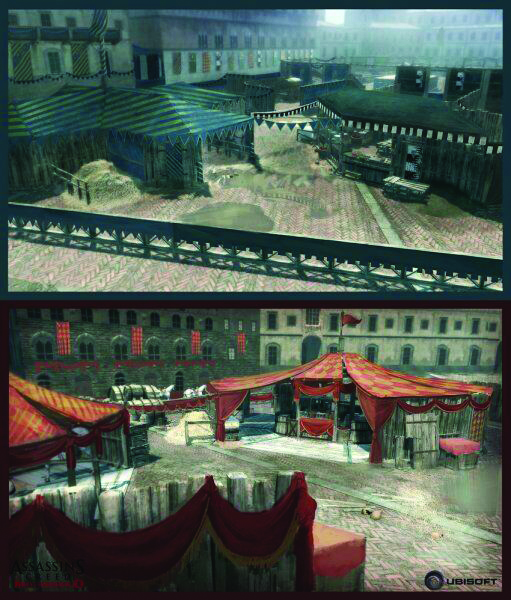
We are used to thinking that the name ‘Assassins’ derives from their profession, but according to several studies (the root of the name ‘Hasan’), the term could also derive from ‘al-Hashishyyun’, i.e., those who are addicted to hashish. Other interpretations suggest a derivation from ‘Asan’ which means ‘guard’, and according to still other versions, followers of ‘Hasan’ (Hasani Sabbah), the Assassins’ leader who conquered their most important fortress on Mount Alamut.
The imposing fortress was cited in several chronicles of the time, including Marco Polo’s Il Milione (Book of the Marvels of the World) in which, on his journey to the East, he speaks of a man as the ‘old man/head of the mountain’. Did the author of Il Milione mean to refer to Alamut? But what, you may ask, does this have to do with Siena?
The tower in question, at the corner of Via di Pantaneto and Via di Follonica, is named as the property of the assassins in several city registers of the 13th century: ‘Turris de Assassetta’. It, therefore, seems clear that they were present in Tuscany at the time.
But that’s not all. There is an act of the Republic of Siena, dated 1262, which attested to an agreement between the government and the sect for the rental of a building precisely where the tower stands today. The document reads «De contractu facto occasione Societatis Templariorum et Assaxinorum observando». It seems clear that not only did the Republic undertake to enter into a contract with this sect, but that the Templars and Assassins were officially in partnership and carried out certain activities of interest for the municipality; what these activities were, however, is not known. The hypotheses vary from trade to the supply of weapons, and from military training to the detention of prisoners. The mysteries have not yet been fully unravelled. This brings us to the end of the first chapter of ‘Unexpected Siena’; as you have just witnessed, there is much more to our beautiful city than meets the eye.
Text by Ambra Sargentoni (Ambra Tour Guide) Editorial coordination: Elisa Boniello and
Laura Modafferi
Photos: Archivio Comune di Siena, Leonardo Castelli Graphics: Michela Bracciali
